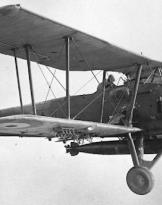The same route has already been traveled by the motorship Cortellazzo, passing in that same arm of the sea on Christmas Eve of the 1941; two months later the Fusijama motorboat will pass in the same direction. All these vessels, charged with transporting precious and untraceable materials in war-torn Europe, must moreover cross the Pacific where the war between Japan and the United States has just broken out.
Fortunately, the sea is big and the oceans are even more so. The passage, as far south as possible from Cape Horn is, for Orseolo, the hardest of all, given the infamous weather with very thick fog (of course no radar, only lookouts forced to change gear every 20 minutes due to the cold polar). However, those same weather conditions force the much larger British auxiliary cruisers based in the Falkland Islands to get close, and everything goes well. The merchant ship, under the command of the recalled Lieutenant Mario Zustovich, then slowly ascends the Atlantic (performing a curious zigzag course) finally arriving, the 23 February 1942, after 19.509 miles of navigation, in Bordeaux, where it is greeted at the dock by a band that does not spare the breath in the brass instruments, by a row of authorities interspersed with beautiful German navy auxiliaries laden with flowers, and by the enthusiasm of the Italian sailors of the Atlantic base in Betasom.
The cargo of the merchant ship includes, among other things, 77 t of tin in bars to be transferred immediately to Italy and 1.988 t of rubber intended for Germany. The importance of those bars is soon told. The Royal Navy had been forced, in the 1941, to have the 20.000 bar counters existing in Italy registered in order to recover (partly, given the existence of three armed forces) the 700 tons of tin that covered them, being that indispensable material for the welding of the electrical conduits of ships.
Between April 1941 and the same month of the 1943 27 Germanic blockade violators attempting to cross from the Far East to Europe, succeeded in 12 cases. In the same period the Italian motor vessels carry out, in the same sense, 4 trips, all successful. Alongside the seafarers launched in these enterprises, the Navy men belonging to the enormous Telecommunications Center of Coltano are doing their utmost, realized with foresight between the 1919 and the 1923 for intercontinental connections, on the initiative and direction of the future Admiral Giancarlo Vallauri, father of Italian electronics and founder, in 1916, in Livorno, of the Radioelectric Institute of the Regia Marina, then called Marinaelettro and today CSSN ITE - Institute for Telecommunications and Electronics.
It is the men of Coltano who suggest Orseolo and other Italian merchant ships on the oceans through the ether. For this purpose, a maximum security code is used, brought physically to Japan, in the 1941, by Admiral Carlo Balsamo after an adventurous journey through Latin America. During the trip, the same officer, already commander-in-chief of the Regia Marina in East Africa until December 1940, had not failed to have the phony code made by the Telecommunications Department fake “without realizing it” by the British Intelligence Service .
Finally, the updated information on the basis of the telegrams transmitted by Coltano is drawn up on the basis of the information gathered by the men and women of the SIS (the abbreviation attributed, in the 1941, to the Information Department of the Navy) and of the SIA (the Royal Aeronautical Services ) in North and South America, to be transmitted from Argentina to Coltano. And this is also a story that will have to be told, sooner or later.

Source: Military Navy












